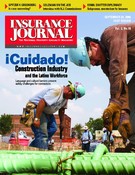Brad Giles encounters cultural differences among his firm’s workforce on a daily basis. Giles is corporate vice president at the Washington Group, an international construction firm based in Boise, Idaho, that has more than 25,000 employees, working in 40 states, and 30 countries worldwide.
“Here, if we work with Hispanics, it’s important for our supervisors to know that typically with a foreign-born employee, they are not going to tell you that you are doing something wrong. They are just going to do what the boss tells them to do.”
Cort Dial, operations manager for JMJ Associates, an Austin, Texas-based consulting firm that advises large corporations on safety and cultural issues, agrees.
Dial says that foreign-born workers generally will not question authority, even if safety is involved. “They are extremely loyal to their supervisors especially their immediate supervisors,” Dial said. “They will not challenge that person or criticize that person. … They see that as an act of disrespect. You just don’t do that.” Dial says the challenge businesses face, especially construction firms, is to get immigrant workers to speak up when they think a procedure is less than safe or when they believe there may be a safer way to do it.
It’s also important for supervisors to understand what’s important to the foreign-born worker. “Hispanic workers’ families are a really big thing for them, so it’s good to always ask about their family and do things to show interest and to try and be on the same value scale as what they are,” Giles said.
Dial added that another thing to consider with a foreign-born workforce is their level of dedication to the job. “Where many of our domestic employees relate to their work as a job,” Dial says, immigrant workers may “relate to it as craft skill.” Not to say that isn’t true to some extent with domestic employees, Dial adds, but immigrant workers see their work as an “art.”
“I’ve been on [construction] projects where you can tell whether it was a domestic worker or immigrant worker who had done the work because of the quality of the finish and just the attentiveness to detail.”
Bi-cultural management is absolutely essential when managing a foreign-born workforce, according to Dial. For example, JMJ works with an African-born consultant who has a very different approach, Dial noted, citing this as an example. “He told fables all the time where I would explain things in the western way, A+B=C. But he would tell a fable and you would see all the Africans in the room nod their heads and smile; they would get it,” he said.
Dial added that for construction firms to improve safety the level of relationship between their first line supervisor and the employee has to be more than just subordinate to boss; it needs to be human being to human being.
“So, we’ve got to bring out to the employees that it’s OK to call a time out if you don’t understand or agree with how something is being done,” Giles said. “And you can talk to your supervisor to figure out how to do it right.”
“The bottom line is that what people want is a safe, clean, healthy respectful place to work,” Dial said. “They want a nice clean place to eat. They want clean cool water to drink and a boss that treats them not just like a tool to get work done but as a human being. And we find that when you create those conditions in the workplace all of a sudden accidents and injuries in the workplace just start disappearing.”
Topics Construction
Was this article valuable?
Here are more articles you may enjoy.


 Zurich to Buy AIG’s Travel Insurance Business for $600 Million
Zurich to Buy AIG’s Travel Insurance Business for $600 Million  Coverage Needed: Hundreds of Thousands in SE Now in Flood Zones With New Maps
Coverage Needed: Hundreds of Thousands in SE Now in Flood Zones With New Maps  ‘Great Resignation’ Enters Third Year as Workers Embrace AI, Upskilling, PwC Says
‘Great Resignation’ Enters Third Year as Workers Embrace AI, Upskilling, PwC Says  As Rates Rise, Majority of Homeowners Say Insurance Industry Is in Crisis: Survey
As Rates Rise, Majority of Homeowners Say Insurance Industry Is in Crisis: Survey 


